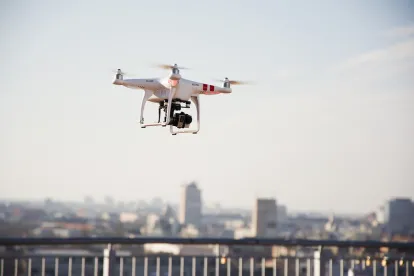It has been nearly two weeks since the sweeping FAA Reauthorization Act of 2018 was signed into law on Oct. 5, 2018. As the first long-term reauthorization of the Federal Aviation Administration to be enacted since 2012, the primary purpose of the act is to extend funding for the FAA for the next five years. However, the act also contains a plethora of supplementary provisions, including requirements that the FAA promulgate rules setting the standard for seat sizes on commercial aircrafts, barring carriers from involuntarily removing passengers who have already boarded aircraft, and prohibiting live animals from being transported in aircraft overhead compartments.
One supplemental provision has caused particular concern to those within the unmanned aerial vehicle (UAV) community. The Preventing Emerging Threats Act, Division H of the larger FAA Reauthorization Act, authorizes the Department of Justice and Department of Homeland Security to track, warn, disable, seize, damage, and destroy unmanned aerial vehicles determined to pose a “credible threat” to people, facilities, or assets. Significantly, this authority is granted to agencies without constraining their decision with any warrant requirement. This sweeping provision affects any commercial or recreational drone use, particularly those who operate near any sort of high-profile event or facility, as there is an ever-present risk that innocent UAVs will be identified as a “credible threat” and treated accordingly.
Certain industry insiders have gone so far as to express concern that, for example, this provision could be used to shoot down news reporting drones capturing footage of controversial detention facilities.
Further information on the FAA Reauthorization Act of 2018 is available online at https://www.faa.gov/news/updates/?newsid=91844.







 />i
/>i

